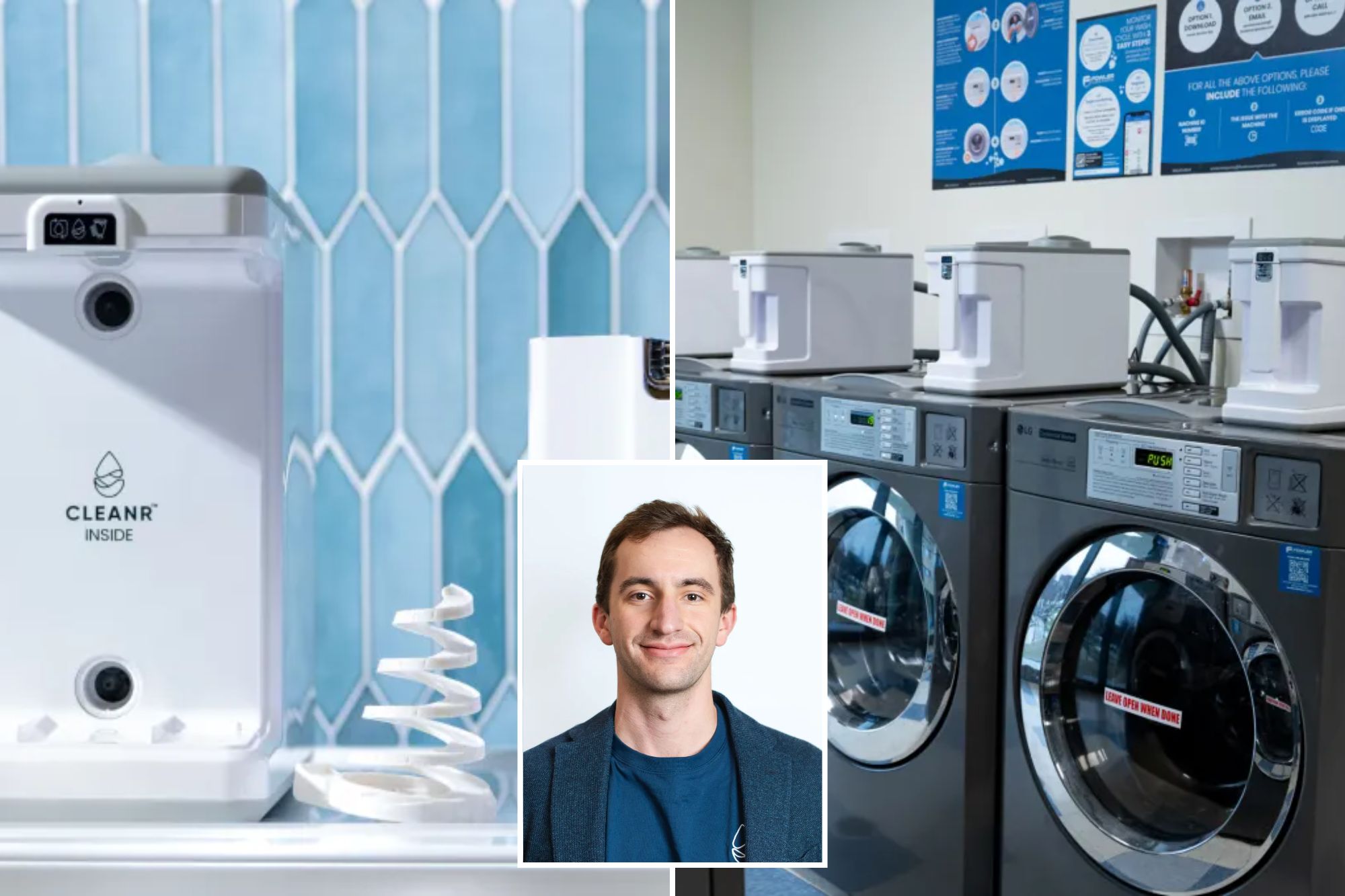Not to be sharp, but laundry is one of the main contributors to microplastic pollution.
Synthetic tissues such as polyester and nylon spilled small fibers during the washing cycle, which can go through the standard wastewater treatment and end in the navigable tracks.
Now, three alumni of the University of the Reserve of Western Reserve have manufactured a special washing machine filtration system to capture microplastics. Cleanr technology develops in three universities while selling online $ 249 for domestic use.
“It only became this project where we realized [that] Microplastics seemed to be a big problem, “Cleanr’s co -founder and CEO of Cleanr told The Post. [spending] Our free time, really, whenever we could, to develop this technology. “”
Microplastics are an urgent problem because they are literally everywhere, from personal care products to car tires and even food and water.
These lowercase particles have been linked to a list of concerns, including a higher risk of heart attack, stroke and certain cancers and potential damage to reproductive, digestive and respiratory health.
Pennington and his brotherhood companions Sigma Chi, David Dillman and Chip Miller[box]An installation of 50,000 square feet in Case Western in Ohio and one of the largest manufacturers in the United States.
The princes of the tide began to print prototypes, which went through the Wringer.
“They actually flooded the cuisine of their mother,” said Terry Moore, Cleanr’s executive chairman.
“Then they tried it in the washing machine of their brotherhood house, and it worked a bit,” he continued, “but then they learned that it really did not work when the baseball players threw their entire washing there, with all the dirt and gravel.”
The trio of fighting dirt went to nature to iron his problems. They thought of how the blanket rays use vortex dynamics to prevent their gills from being observed as they filtered foods from the water. Thus, Vortx was born.
Vortx, which resembles a small tornado, sits inside the outer filter of Cleanr.
The device looks like a luxury coffee maker. It is installed in the drain hose of the washing machine to filter the dirty water that comes out of the machine.
Vortx is designed to capture more than 90% of microplastics, to the size of 50 microns (about the width of a very fine hair chain) and push those waste in a pod that can be removed and thrown.
The Cleans team estimates that a filter prevents the equivalent of 56 credit cards for plastic value from entering the navigable tracks each year. Cleanr application allows customers to estimate their impact.
There are other washing machines on the market: Pennington said that Cleans technology “not only captures microplastics, but also provides a consumer experience that [allows users to] Feel they are making the difference. “”
Moore said they have raised more than $ 7 million from friends and family to get Cleanr on the market.
The money from the seeds of a Case Start-up competition helped buy the team’s first washing machine.
Now they have an army of washing machines and dryers to thought[box].
Sudsy Buds are looking for collaborations with washing machines to integrate their filters into machines during production.
In the meantime, Case Western, the University of Akron and South Alabama University are adapting campus machines with Cleanr.
It is a good time: only this year, France began to require new washing machines to have a filter for microfibers. Other governments have considered similar measures.
The California legislature approved a bill that would have forced microfiber filtration systems to new residential and state use, but the Governor of California Gavin Newsom ensured it by 2023. He cited worries about consumer costs.
A New Jersey Senate Bill introduced in September would require that the washing machines sold on January 1, 2030 or after they had filtration systems that collect microfibers and microplastics.
The legislation, which referred to the Committee, said that, “in addition to prejudice to the marine life and the ecosystems that our communities depend on, microplastics enter our bodies in the food we eat, the water we drink and the air we breathe.”
Needless to say, Pennington.
“If we do not act now, and if we do not take it at the source now, it will be too late to make a difference,” he said.
#Exclusive #Microplastics #devices #clothes
Image Source : nypost.com
